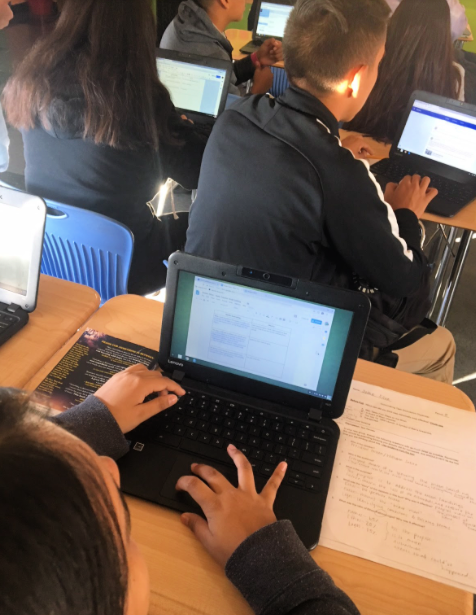Data, data, data: a common buzzword in education. As a teacher, I am constantly thinking about my students’ data. How did they perform on their recent exit ticket, unit exam, interim assessment, SAT, and CAASPP? How many days have they been absent or tardy? What is their Lexile level or English learner status? The list of assessments and data can go on an on. As a teacher, I use this data to inform my classroom instruction by tailoring my lessons to the needs of all of my students. This sometimes means going back to reteach a concept, spiraling back to go over a specific skill, scaffolding to support struggling readers, and extending a topic to challenge advanced students.
But on the student end, students are faced with constant tests and assessments that teachers claim are “important” and critical for their futures. So how do we get students to care about their own personal data?
First, the why is ultimately the most important aspect of every piece of data. Why does it matter? Why should students care about it? Next comes the how. How is this data relevant? How can the data reveal improvement? As a teacher I can sound like a broken record constantly reminding students the importance of their data but the ‘ah ha’ moment is when they see it for themselves.
As a school, we identified the top pieces of data that are both trackable (occur more than one time per year) and connected to our school wide focus of reading and analyzing grade level complex texts. For our students, that meant lexile score (tested three times per year), interim assessments (three times per year in English, math and science), SAT and SAT practice exams (four times per year), and grades and attendance (every five weeks).
So what do they do with all of that data? Every time students have a new piece of data, they input it into their own personal data tracker. Their data tracker is on a Google sheet that they use starting freshman year through senior year. During weekly goal setting, students set SMART goals focused on a single piece of data and the action step they intend to take in order to improve. Over time, students can see their progress throughout the year as well as throughout their time in high school. Now instead of just taking an “important test” students can put a piece of their own data to the test. The students are now the ones to take ownership over their own data not only the teacher. With more student by-in, pushing students to higher achievements becomes a team effort.
Chelsea Culbert
Latest posts by Chelsea Culbert (see all)
- Sello Estatal de STEM: Un Nuevo y Emocionante Reconocimiento para Estudiantes en La Preparatoria - October 14, 2019
- State Seal of STEM: An Exciting New Recognition for High School Scholars - October 10, 2019
- 4 Aplicaciones Educativas Que Debe Utilizar En Su Clase - August 29, 2019
- 4 Educational Apps You Should Be Using In Your Classroom - August 28, 2019
- Es Importante Que los Maestros Prioricen las Relaciones Durante las Primeras Semanas de Escuela - August 27, 2019


Pingback: Education must-reads: From a $40 million race for state superintendent to students’ efforts to get their classmates to vote, 7 new things to know about California’s schools (and beyond) | LASR Español